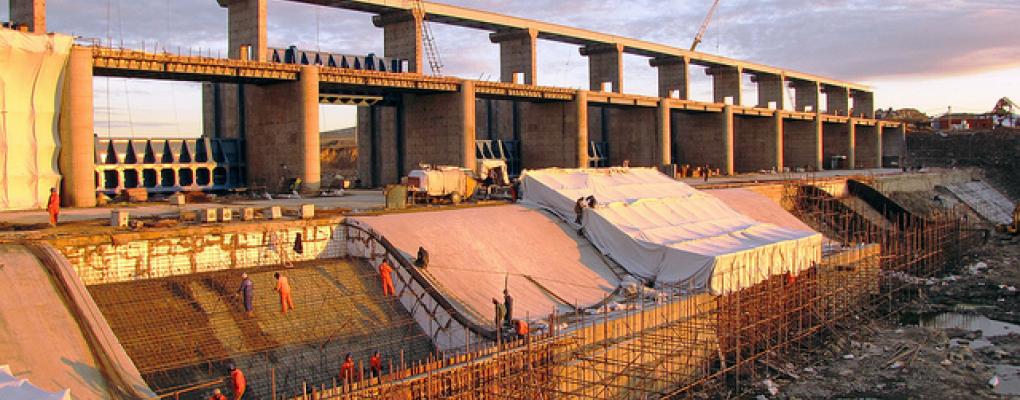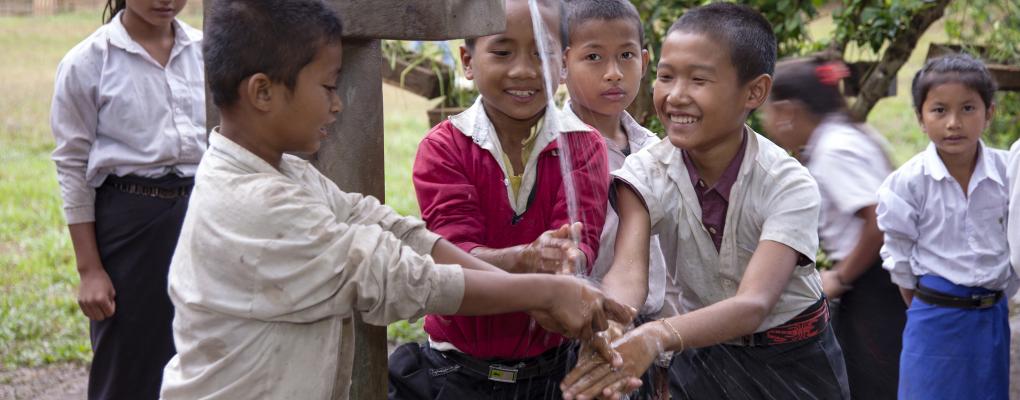jyoti bisbey

This article was first featured on the World Bank Group's Public-Private Partnerships Blog.
“What is different now?” This question echoed through my head during my recent morning runs along the beautiful Ishim River in Astana, Kazakhstan.
I was in Astana on mission to launch the new technical assistance program for Kazakhstan’s PPP policy reform, which addresses bottlenecks that constrain project structuring. This reform is especially important if the country’s Almaty Ring Road PPP is to be effective. Almaty Ring Road has been a thought-provoking transaction because previous attempts to solidify the partnership have not panned out, and grasping the history is important to resolving this successfully. Moazzam Mekam, IFC’s Regional Manager for Central Asia, and I spent many hours brainstorming on scenarios that would allow us to bring all of the stakeholders into agreement. Most of the time, it felt like we were trying to pull a rabbit out of a hat.
The Almaty Ring Road is Kazakhstan’s only PPP in preparation right now, and it’s in the spotlight during its prequalification stage. The advisory services are provided by IFC; three years of project preparation have been devoted to ensuring that this is the right project to take to market as a PPP. As the World Bank Group continues to support Kazakhstan on bringing private sector participation into the delivery of public infrastructure services, the reality is that since the 2006 Concession Law, not one PPP project has transpired. Before the Concession Law, there were three PPP projects, but all of them have had issues.
As I resumed one of my sunrise runs in this very flat, picturesque, futuristic city, I recalled a recent conversation with Moazzam. He made the point that even when there is a high level of political support for PPPs in the country, institutional and regulatory frameworks are sometimes not ready for PPPs. Capacity and willingness to undertake PPPs at the line ministry/agency level is limited. In instances like this, or when conditions exist in a similar context, we must ask ourselves how to respond, and how to move forward.
Of course there is neither a panacea, nor a perfect formula to get it right. Every government, sub-national or national, has its own forces at play. Our job is to understand those forces well enough to evaluate the appropriateness of a PPP, and then, if it’s decided that the environment is right for this sort of partnership, to structure an effective PPP.
I’ve learned over time that each PPP is different, and solutions must be tailored to very specific conditions. The waste sector in Brazil can’t use the same PPP that worked for the waste sector in Colombia; a light rail PPP that transformed one city in India would fall apart in another Indian city.
As a starting point, we believe that it make a difference if all IFIs join hands together on the main actions needed to reform Kazakhstan’s PPP agenda. That’s why I am working with Moazzam’s team to provide technical assistance on screening and preparation of projects.
Our emphasis is on convening all the stakeholders in the PPP space – such as the European Bank for Reconstruction and Development, the Asian Development Bank, and the United Nations Economic Commission for Europe – making it possible to reach a common understanding. Then we will be equipped to work with the government to present a unified voice on what needs to be done. Our plan is to identify two to three key ‘deal breakers’ which absolutely have to be addressed in order to move the projects forward. This will send a strong signal to the market that Kazakhstan is open for business.
In Kazakhstan – and around the globe – our challenge is not to do one PPP transaction every four or five years, but to do a portfolio of properly vetted PPP transactions every year. This requires a greater level of understanding and commitment around PPPs than currently exists in many of the countries we serve. As we join forces internally to reach this goal, we envision a different way of helping governments succeed in delivering infrastructure services in the long term, with more rapid progress between the time that advice is offered and when a project comes to fruition.
How can we better incentivize governments to act upon the advice they seek? This is, of course, a challenge we all share. We’re open to hearing your suggestions on how we can collaborate even more effectively, ultimately helping to shift policies that will affect positive change on the ground.
Special thanks to Moazzam Mekan for his contributions to this piece.
SOURCE:
https://blogs.worldbank.org/ppps/helping-governments-act-upon-advice-they-seek

Jyoti is the Program leader of the PPP Certification Program on behalf of the MDBs (ADB, EBRD, IDB, MIF, IsDB, WBG and PPIAF). She sits in the PPP Unit of the World Bank Group and is based in Washington DC.
Jyoti is currently leading the dialogue on PPPs in Kazakhstan and Tajikistan from the World Bank Group and previously in Brazil, Vietnam, Russia, Uruguay, Mozambique, Madagascar, Kenya and Ethiopia. Her work focusses on infrastructure project financing, financial viability assessments and structuring of PPP options.
Her recent achievements have been defining the private capital mobilization/catalyzation among development community; launching the Global PPP Certification program −‘CP3P’; financial recovery planning for Vietnam Electricity and; structuring PPPs in Irrigation toolkit. Jyoti specializes in Infrastructure Finance with an MBA from George Washington University and Mathematics in undergraduate, she has over 10 years of work experience in project finance transactions and PPPs.
See below for some examples of Jyoti's other work:
- A financial recovery plan for Vietnam electricity: with implications for Vietnam's power sector
- How to develop sustainable irrigation projects with private sector participation

At conferences, in meetings, and even during casual work conversations, I am asked the same two questions: “Which countries are ideal for investments in infrastructure? Where should the investors invest and what new opportunities should they look toward?”
While sitting in the World Bank gives us a bird’s-eye view of emerging markets and developing economies (EMDEs), it doesn’t offer the up-close-and-personal perspective that investors demand in order to answer these questions in a succinct way. Not that there’s any shortage of synoptic responses. Any number of “market gurus” can assess projects in a second, gathering all the low hanging fruits which are out there in EMDEs. If there is a private deal to be made, then the deal is already done.
Assessing investment possibilities becomes complicated where there is a third party involved. I live and breathe this challenge because I work in the world of public-private partnerships (PPPs) – developing infrastructure finance – where the deal is tough to come by. In the PPP universe, the government is not only the grantor but also the procurer of goods and services, policy maker, regulator, supplier, and buyer or off -taker of the outputs. And this is a universe where the 10,000-foot view of infrastructure in emerging markets is a useful perspective from which to examine the global infrastructure investment landscape.
Getting the lay of the land
Before looking at the global infrastructure investment landscape, it is important to know which regions have the greatest needs. A recent World Bank study[1] shows South Asia ranking at the top (see the graph below) in terms of both annual infrastructure investment requirement as percentage of GDP (15%) and absolute terms of investment amount ($300 billion). What does this number mean? In order to keep up with the regional predicted GDP growth rate of 6%, the South Asia region countries need to invest nearly 15% of their GDP in new infrastructure and to maintain existing infrastructure.

Getting the lay of the land
Before looking at the global infrastructure investment landscape, it is important to know which regions have the greatest needs. A recent World Bank study[1] shows South Asia ranking at the top (see the graph below) in terms of both annual infrastructure investment requirement as percentage of GDP (15%) and absolute terms of investment amount ($300 billion). What does this number mean? In order to keep up with the regional predicted GDP growth rate of 6%, the South Asia region countries need to invest nearly 15% of their GDP in new infrastructure and to maintain existing infrastructure.
Notwithstanding these findings, an examination of the Private Participation in Infrastructure (PPI) database shows that the top destinations for private sector investment continue to be Brazil, China, India, Mexico, and Turkey. These five countries accounted for 73% of investments and 63% of all projects in 2014.
So what happens to the rest of EMDEs? These overlooked countries, working toward PPI maturity, truly fit the definition of “emerging economies.” I’ve broken down this concept so we can quantify these nations’ potential for private investment in infrastructure, and the graph below depicts how a country can be considered an investment destination.

I define PPI maturity to be a function of understanding, willingness, and commitment toward PPI under the current circumstances. Maturity could range from high to low (Y axis). PPI maturity looks specifically at private sector participation in public infrastructure and will require different levels of government support depending on country’s capacity (Z axis). PPI maturity could be different at a given time and for a given country.
There are further considerations. On the graph, the X axis shows areas or phases which, in my experience, weigh heavily on a project’s chances of success. These include:
- Whether the project will even have access to long term financing from either domestic or foreign source?
- If there is availability of this long term financing to public infrastructure?
- Have any of the high priority projects closed, and at the same time, are state-owned enterprises beginning to see the value of PPI? and
- Are sub-nationals entering the PPI market? (For those that experienced the first generation of PPPs, are they bearing lessons and putting more emphasis on contract management?)
Government support as shown in the Z axis will range from full support (direct financial, indirect guarantee, and regulatory) to minimal (regulatory) as country matures in PPI. Throughout the phases, the country maturity levels can go up and down depending on whether it continues to learn and improve.
Charting a course
This last point – whether a country continues to learn and improve – is key. There are many countries that are making the effort to be PPI mature and market ready. Some are clarifying their PPP legal framework, some are professionalizing their financial and local capital markets, and some are already launching pilot projects. Several countries have progressed to a second generation of PPPs, building on the lessons from the first wave or going back to the drawing board.
There’s no right answer to the two questions that keep coming my way, and which are certainly directed at countless other infrastructure finance professionals around the world. Not only is there no right way, but if there’s an approach that works one day, the next day will be different. Successful PPP deal-making will keep changing according to the circumstance, government support, and level of PPI maturity. Charting these elements, as in the graph above, is the first step toward mapping out a future for infrastructure finance possibilities in EMDEs.
First featured on the World Bank Group's Public-Private Partnerships Blog. Research contributions from Zichao Wei.

Jyoti is the Program leader of the PPP Certification Program on behalf of the MDBs (ADB, EBRD, IDB, MIF, IsDB, WBG and PPIAF). She sits in the PPP Unit of the World Bank Group and is based in Washington DC.
Jyoti is currently leading the dialogue on PPPs in Kazakhstan and Tajikistan from the World Bank Group and previously in Brazil, Vietnam, Russia, Uruguay, Mozambique, Madagascar, Kenya and Ethiopia. Her work focusses on infrastructure project financing, financial viability assessments and structuring of PPP options.
Her recent achievements have been defining the private capital mobilization/catalyzation among development community; launching the Global PPP Certification program −‘CP3P’; financial recovery planning for Vietnam Electricity and; structuring PPPs in Irrigation toolkit. Jyoti specializes in Infrastructure Finance with an MBA from George Washington University and Mathematics in undergraduate, she has over 10 years of work experience in project finance transactions and PPPs.
See below for some examples of Jyoti's other work:
- A financial recovery plan for Vietnam electricity: with implications for Vietnam's power sector
- How to develop sustainable irrigation projects with private sector participation
I’ve been immersed in the world of public-private partnerships (PPPs) for over a decade, and during that time I have seen first-hand how these partnerships can help large-scale infrastructure projects overcome serious challenges. The new APMG PPP Certification Program, a global certification program on PPPs, offers access to knowledge at a scale that has never before existed, and it has the potential to improve the effectiveness of infrastructure PPPs around the world.
Filling a gap
The APMG PPP Certification Program is a significant step forward in the long-term goal of introducing PPPs as an effective option for meeting countries’ basic service and infrastructure needs, while helping to reduce poverty. But until now, people involved in PPP projects have lacked a common professional language, set of terms, and understanding of best practices based on experience. In some cases, this has resulted in PPPs that did not achieve their potential or benefit those in need as originally intended.
The APMG PPP Certification Program offers a path to higher quality PPPs because it fills these gaps, strengthening the professionalism of those who are actually creating, staffing, and managing those partnerships. On an even more fundamental level, the program will help countries decide which projects are best suited to the PPP approach so that time and resources are used most effectively.
First of its kind
The APMG PPP Certification Program and CP3P, the new professional credential for those who complete the program, are products of a ground-breaking collaboration among multilateral development banks (MDBs) and institutions that share the belief that more effective PPPs offer possibilities that have not yet been realized. The program is an innovation of the Asian Development Bank (ADB), the European Bank for Reconstruction and Development (EBRD), the Inter-American Development Bank (IDB), the Islamic Development Bank (IsDB), the Multilateral Investment Fund (MIF), and the World Bank Group (WBG), and is partly funded by the Public-Private Infrastructure Advisory Facility (PPIAF).
One element of the APMG PPP Certification Program that distinguishes it is the PPP Certification Program Guide, a free, downloadable, and comprehensive body of knowledge on all aspects of PPPs. This PPP Certification Program Guide is a stand-alone resource on PPPs as well as a tool to support candidates’ work toward the CP3P credential; as such, it is a monumental contribution to scholarship on infrastructure and PPPs. The team that created and reviewed it includes several of the world’s leading PPP experts, hand-picked by the founding MDBs. Together, the APMG PPP Certification Program, the PPP Certification Program Guide, and the CP3P credential build a foundation upon which PPPs, used in the right circumstances, can achieve their full potential.
The World Bank Group and PPPs
On our end, the World Bank Group is committed to helping governments make informed decisions about improving access and quality of infrastructure services, including the PPP delivery option when the circumstances are right. This approach is further strengthened when governments can assemble robust data, build capacity, develop and test tools, promote disclosure, and encourage engagement with all relevant stakeholders. Information and guidance on each of these can be found at the PPP Knowledge Lab, an online platform developed in collaboration with the MDBs: https://pppknowledgelab.org/.
PPPs can address the World Bank Group’s twin goals by enhancing the reach and quality of the delivery of basic services. When designed well and implemented in a balanced regulatory environment, PPPs can bring greater efficiency and sustainability to the provision of such public services as water, sanitation, energy, transport, telecommunications, healthcare, and education. PPPs can allow for better allocation of risk between public and private entities. PPPs are one tool among others for infrastructure delivery; every country has its own unique opportunities and challenges, and as an institution we recognize that solutions need to be tailored to the context.
My sincere thanks go to everyone who has made the program and body of knowledge possible. This includes the forward-thinking MDBs and institutions that committed early on to this project, as well as the steering consultative committee, the World Bank Group and APMG project teams, the PPP Certification Program Guide’s authors, and the external review panel members. I’d also like to thank the candidates who will be pursuing the CP3P credential, because their work will help strengthen infrastructure around the world.
I invite you to read my recent blog post, which discusses this in greater depth, at:
http://blogs.worldbank.org/ppps/worldwide-effort-improve-ppp-practice

Jyoti is the Program leader of the PPP Certification Program on behalf of the MDBs (ADB, EBRD, IDB, MIF, IsDB, WBG and PPIAF). She sits in the PPP Unit of the World Bank Group and is based in Washington DC.
Jyoti is currently leading the dialogue on PPPs in Kazakhstan and Tajikistan from the World Bank Group and previously in Brazil, Vietnam, Russia, Uruguay, Mozambique, Madagascar, Kenya and Ethiopia. Her work focusses on infrastructure project financing, financial viability assessments and structuring of PPP options.
Her recent achievements have been defining the private capital mobilization/catalyzation among development community; launching the Global PPP Certification program −‘CP3P’; financial recovery planning for Vietnam Electricity and; structuring PPPs in Irrigation toolkit. Jyoti specializes in Infrastructure Finance with an MBA from George Washington University and Mathematics in undergraduate, she has over 10 years of work experience in project finance transactions and PPPs.
See below for some examples of Jyoti's other work:
- A financial recovery plan for Vietnam electricity: with implications for Vietnam's power sector
- How to develop sustainable irrigation projects with private sector participation

